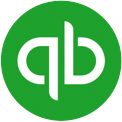There are two main categories for benefits: taxable and non-taxable. Although they are both benefits, they are not the same when it comes to payroll and income tax responsibilities. As a small business owner, it is important that you have an understanding of taxable benefits as they relate to payroll.

What are Taxable Benefits and Why Are They Important?
What is a Taxable Benefit?
Taxable benefits can be goods or services an employer pays for on the employee's behalf. An employer can give the benefit in the form of cash, near-cash, such as a gift card, or in the form of non-cash, such as a parking space. The taxable benefit is given in addition to the employee’s regular wage – it’s like an extra perk an employee receives on top of their everyday earnings.
All taxable benefits are subject to the employee’s income tax. This means that although the employee received a benefit from their employer, the employer is not required to pay the tax. It is the employee's responsibility to report and pay the tax on their taxable benefits.
A large distinguishing factor of taxable benefits is that they are personal in nature, which means the benefit is only taxable when the employee uses it for personal gains. This means the benefit received by the employee is unrelated to their job.
These types of benefits can be given to the employee directly or to the employee’s family member(s).
Some examples of taxable benefits include:
- Motor vehicle benefits include when an employee uses a company car for personal reasons/benefits.
- When an employer provides free lodging and boarding for their employee.
- When an employer provides free housing and utilities for an employee’s permanent residence.
- Counselling services such as financial counselling (counselling services are not taxable benefits if they include mental health counselling or retirement planning).
- Accident insurance and life insurance premiums.
- Group sickness plans (unless it is related to wage-loss replacement that gets paid to employees periodically - not a lump sum).
- Gifts, awards, and prizes that exceed $500 annually.
An employer can choose between two different methods when giving their employee a taxable benefit: allowances or reimbursements.
Allowances
The first method you can use when giving your employee a taxable benefit is to provide them with an allowance. In this case, you would provide your employee with a lump sum so they can use it when needed . You may also release the funds over a period of time, for example, releasing a set amount of money on a monthly or yearly basis.
The amount of money given is predetermined based on its intended use. Let’s say you’re giving your employee the company car for one week, and they will need a gas allowance. You can predetermine the amount of gas money required based on how many kilometres you think the employee will drive during that week.
Reimbursement
Reimbursements can be seen as the opposite of allowances – where allowances are given in advance, and reimbursements are given after the fact. Reimbursements are the amount of money given to employees to repay them for their incurred costs. This method requires the employee to show proof of payment so the employer can reimburse the exact amount.
What are Non-Taxable Benefits?
Taxable and non-taxable benefits are similar in that they provide additional compensation to an employee on top of the employee's regular wage. However, there are a few notable differences between the two.
Non-taxable benefits are benefits that an employer gives to an employee that is not subject to the employee’s income tax statement. This means the employee is not required to pay tax on these benefits.
We’ve already established that a taxable benefit is personal in nature, so a non-taxable benefit is simply the opposite. Non-taxable benefits are related to the employee's work life.
To get a better understanding, here are some examples of non-taxable benefits:
- Cell phones and computers: If an employer provides their employee with a company cell phone or computer for completing work-related tasks, that is considered a non-taxable benefit. However, let’s say an employee uses their personal cell phone to complete a work-related task, and the company reimburses those costs. This counts as a taxable benefit.
- Education: If an employer pays their employee to take a course directly related to their current job and professional development, this is a non-taxable benefit. However, if the employer pays for a course for the employee’s personal growth and is not directly related to their job, this is a taxable benefit.
- Vehicles: If an employee uses their own car to complete a work-related task and the employer reimburses them for the gas money spent, this is considered a non-taxable benefit.
- Private health services: The private health and dental service premiums an employer pays on behalf of their employees are considered non-taxable benefits.
How to Determine If a Benefit is Taxable
Generally speaking, you can determine if a benefit is taxable if you analyze how the person is using the benefit. It will most likely be taxable if they are using it for personal reasons outside the workplace. But unfortunately, it’s not always black and white. There is some grey area when it comes to determining whether a benefit is taxable or not.
For example, in the case of automobile and vehicle allowances, the allowance is non-taxable if it is based on a reasonable per-kilometre rate. However, the benefit is taxable if it is based on a per-kilometre rate that is considered unreasonable.
In the case of childcare expenses, this is only considered a non-taxable benefit as long as it meets the following criteria:
- the service is provided at the workplace
- the service is managed directly by the employer
- the service is equally given to all of the employees at minimum cost (or no cost)
- the service is only available to employees and not the general public
There are specific rules for each situation, so if you're looking for a more precise answer to your circumstances, consider looking at the Canadian Government’s outline on determining if a benefit is taxable.
Calculating the Value of a Taxable Benefit
If you want to calculate the value of a taxable benefit, you will need to look into something called the Fair Market Value. Fair Market Value represents the amount of money a product or service would be sold for on the open market – assuming that the seller and buyer are both adequately knowledgeable about the product or service.
The value of a taxable benefit can be judged by its Fair Market Value. This is the amount an employee would’ve paid for the benefit if the employer had yet provided it for them.
In some cases, you will need to include GST and HST when calculating taxable benefits. You can look at the benefits chart to find out if you need to include these. When assessing the value of the taxable benefit, the amount of GST/HST is calculated based on the gross amount of the benefit.
Is a Taxable Benefit a Payroll Deduction?
Taxable benefits are used when calculating payroll deductions from an employee's wages. Once the value of the benefit has been calculated, including the various taxes that might apply, you will now add this amount to your employee’s regular income for the relevant pay period. This new sum will give you the total income you need to make payroll deductions.
The amount of deductions you withhold depends on if the benefit you give to your employee is near-cash, non-cash, or cash.
Is it Worth Offering Taxable Benefits to Your Employees?
A benefits package will attract the quality employees you want to hire. The job market tends to be competitive, especially among highly-skilled and talented applicants who juggle multiple offers from different companies. A key factor that will help this person decide which offer they want is the benefits package a company can offer. A solid benefits package will demonstrate that your company takes the well-being of its employees seriously – and who doesn’t like free perks?
That being said, non-taxable benefits will attract more people than taxable benefits. This is because people would rather get their benefits completely compensated rather than have to pay taxes later. However, getting taxable benefits is still better than not getting any benefits at all.
The ideal type of benefits package will include a variety of taxable and non-taxable benefits. Just make sure you go over the package with your new hire so they know exactly which benefit is which – that way, they don’t get surprised during tax season.
QuickBooks Online payroll feature will make it easy to keep track of all your employees’ benefits, making for a much smoother tax season. Taxable benefits are a part of your company’s payroll process, and the QuickBooks Online payroll feature will make that process go by a lot smoother. For example, when the time comes to adding taxable benefits to the T4 slip, QuickBooks provides you with the readily prepared form, so all you need to do is input the information, and we’ll do the calculations for you.
You can also save time in a multitude of other areas when you automate tasks such as filing and remitting taxes, tracking time, creating schedules, and more. See how QuickBooks can streamline your payroll today.
Taxable Benefits FAQs
Where do taxable benefits go on the T4?
Employers are required to write down the value of taxable benefits given to their employees in box 14 on the T4 form. For more information on the T4s, see this article.
Do you pay CPP on taxable benefits?
Taxable, cash, non-cash, or near-cash benefits are also pensionable – meaning that you must pay CPP contributions on taxable benefits. The CPP deductions taken from the employee’s income is based on their total earnings. So, when taxable benefits are added to an employee’s total earnings, the overall CPP contribution will be higher.
Is health insurance a taxable benefit?
Health insurance (like medical or dental plans) is not a taxable benefit for employees if the employer makes contributions to a private health service.
How do taxable benefits affect payroll?
The value of a taxable benefit will be added to the employee's income. As a basic example, if the value of the benefit is $1000, and the employee’s regular income is $50,000, then the new income that needs to be reported is $51,000. This new income amount will now be used to make the appropriate payroll deductions.

